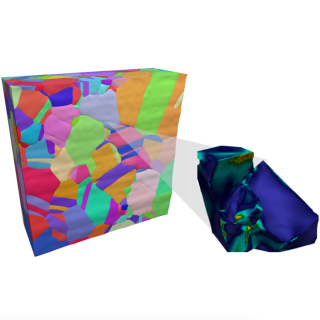
Origins of Fatigue Irreversibilities in High-Performance Alloys
Changes in the performance of advanced alloys in fatigue involve microscopic processes operating over time periods much longer and length scales much smaller than those that can be assessed by a single technique alone. Gaining a more complete understanding on how internal material microstructure drive those rare, intense, and/or irreversible events ultimately leads to final failure is a grand challenge that calls for a multiscale understanding. The overarching goal of this research area is to establish a fundamental understanding of how slip events develop in polycrystalline microstructures and escalate to form fatigue cracks during cyclic loading. Research activities in this area involve calculations of texture, slip transfer, twinning, grain size effects, and slip localization development. In our approach, we merge micromechanics, crystal plasticity theory, and statistical analyses with experimental evaluation on similar length and time scales. An example features our advanced 3D, full field, spatially resolved crystal plasticity techniques with experimentally based generated microstructures.







